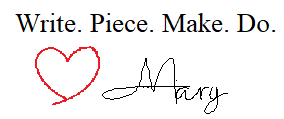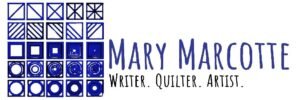Our neice recently had a baby. She and her husband knew early into the pregnancy that the baby had little chance of surviving to full term. Though they saw doctor after doctor, no one was able to help them. They lost little Asher only an hour after he was born. A few days later she put the word out that she would like to have a memory bear made from one of the outfits meant to be his. I quickly offered my sewing skills, and she agreed. I picked up the gray and white outfit and began working on a tiny bear with whales on it. Oh goodness, that little outfit was small!
Because I was so limited in what I could get from the fabric, I had to choose the smallest pattern I could find: an old Simplicity pattern that is most similar to the current Simplicity S9441. Arms and legs on the outfit had to serve as the bear’s arms and legs, and the body of the outfit had to provide both the body and head of the bear. I got close to eeking out all of the pieces, but in the end I had to supliment a bit of solid gray for the back of his head. This meant that I could leave his hat in one piece so it could be used as a hat for the bear.

First, let me tell you that the pattern pieces mostly serve as a guide for sizing rather so I could leave arms and legs intact. I lay the pattern down on each limb to get a sense of the length of the bear’s back legs, but left the footie and side seams intact. After stuffing, the legs are sewn into the bottom of the body.

I did the same with the arms, but I also had to close off the shoulder seams since I couldn’t sew them INTO the body. To do this, I first stuffed the limb then made a running stitch around the top of the arm and pulled the fabric tight tying off the seam. The arms are hand-stitched in place. Rather than make button-holes in the hat so the ears could stick through, I made a simple welt pocket opening. (Here are instructions from Oliver + S.)
Making the rest of the bear was just a matter of finding fabric for and cutting out the body and head then following directions. I don’t recommend modifying patterns the first time you use them, but I’ve made stuffies for each of the grandchildren, so thinking through the process and resolving the issues was not especially difficult. I did, however, have to take extra time and make mockups of some of the parts to be certain that they would work before cutting into an outfit so precious and of such sentimental value. In the end, Samantha was pleased with her memory bear. I can only hope that this labor of love brings her a little peace, joy and precious memories of her little angel.
Click here for information on how to adapt a pattern to make an Alzheimers fidget bear



Pingback: How to Make a Fidget Bear | Mary Marcotte